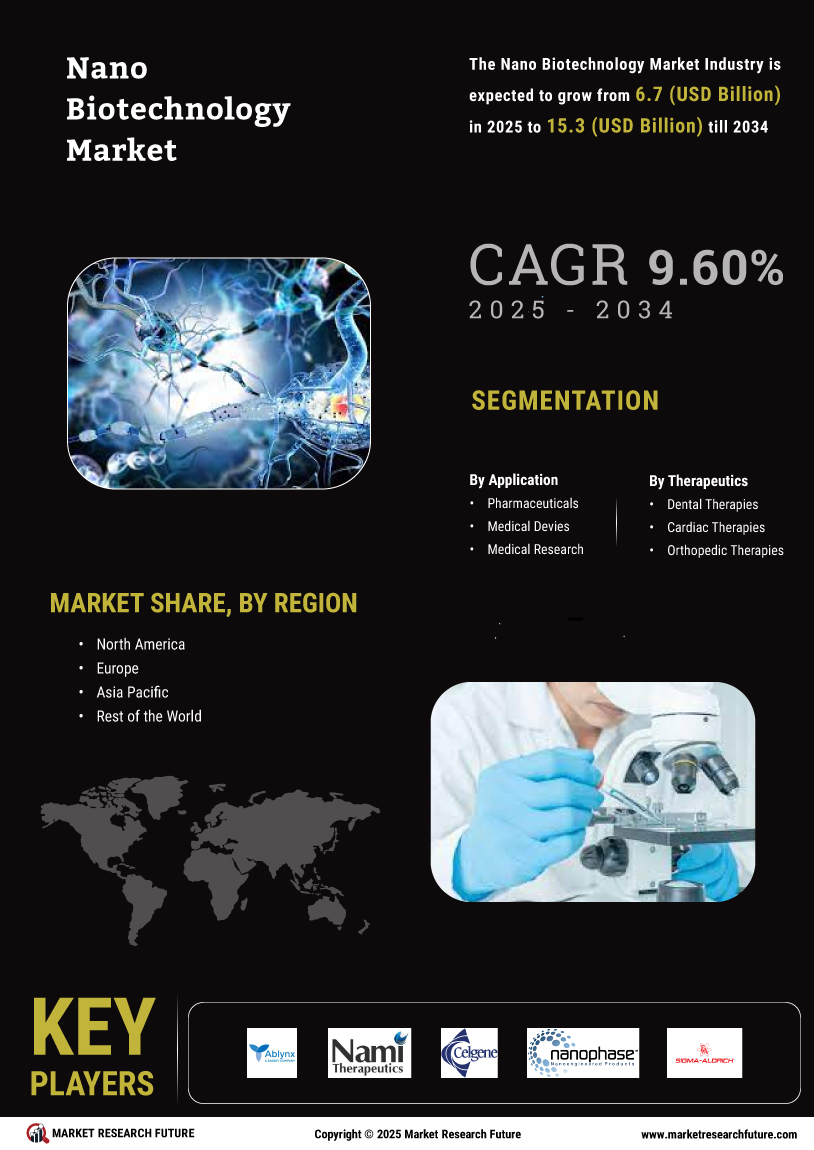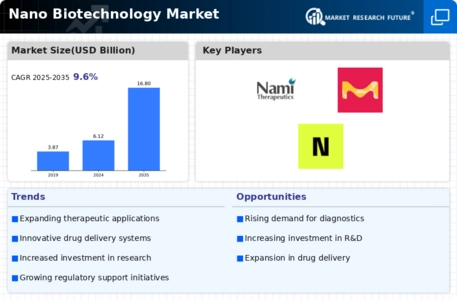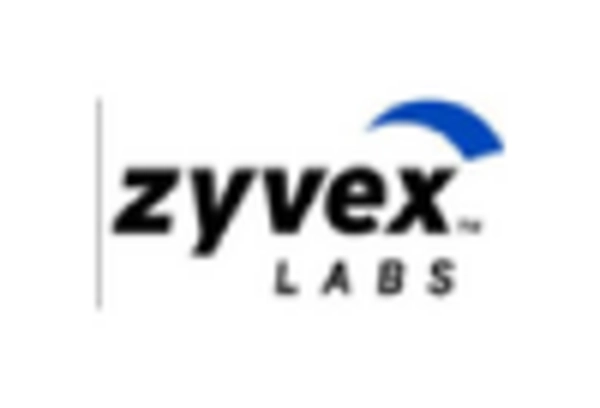Market Growth Projections
The Global Nano Biotechnology Market Industry is projected to experience substantial growth, with estimates indicating a market size of 6.12 USD Billion in 2024 and a potential increase to 16.8 USD Billion by 2035. This growth trajectory suggests a compound annual growth rate of 9.6% from 2025 to 2035. Various factors, including advancements in drug delivery systems, diagnostic techniques, and agricultural applications, are likely to contribute to this expansion. The increasing recognition of the benefits of nanotechnology across multiple sectors is expected to drive investment and innovation, further solidifying the market's position in the global economy.
Regulatory Support and Frameworks
Regulatory support and frameworks are playing a crucial role in shaping the Global Nano Biotechnology Market Industry. Governments are establishing guidelines to ensure the safe and effective use of nanotechnology in various applications, including healthcare and agriculture. This regulatory clarity is fostering innovation and encouraging companies to invest in nanobiotechnology research. As a result, the market is likely to experience accelerated growth, with projections indicating a valuation of 6.12 USD Billion in 2024. The establishment of robust regulatory frameworks is essential for building public trust and facilitating the commercialization of nanotechnology products.
Growing Applications in Agriculture
The Global Nano Biotechnology Market Industry is expanding its footprint in agriculture, where nanotechnology is being harnessed to improve crop yield and pest resistance. Nanoparticles are utilized in the development of smart fertilizers and pesticides that enhance nutrient delivery and minimize environmental impact. For example, nanoscale formulations can increase the efficiency of agrochemicals, leading to sustainable farming practices. This trend is likely to gain momentum as global food demand continues to rise. The integration of nanotechnology in agriculture not only supports food security but also contributes to the overall growth of the Global Nano Biotechnology Market Industry.
Advancements in Diagnostic Techniques
Innovations in diagnostic techniques are significantly influencing the Global Nano Biotechnology Market Industry. Nanotechnology enables the development of highly sensitive biosensors and imaging agents that can detect diseases at an early stage. For example, quantum dots and gold nanoparticles are being utilized in various diagnostic applications, enhancing the accuracy of disease detection. The growing emphasis on preventive healthcare is likely to further stimulate market growth. As the Global Nano Biotechnology Market Industry evolves, the integration of nanotechnology in diagnostics could lead to a market valuation of 16.8 USD Billion by 2035, reflecting a compound annual growth rate of 9.6% from 2025 to 2035.
Rising Demand for Targeted Drug Delivery
The Global Nano Biotechnology Market Industry is experiencing a surge in demand for targeted drug delivery systems. These systems utilize nanoparticles to deliver therapeutic agents directly to diseased cells, minimizing side effects and enhancing treatment efficacy. For instance, the use of liposomes and dendrimers in cancer therapy has shown promising results, potentially improving patient outcomes. As the market is projected to reach 6.12 USD Billion in 2024, the focus on personalized medicine is likely to drive further innovations in this area. The increasing prevalence of chronic diseases necessitates advanced drug delivery mechanisms, thereby propelling the growth of the Global Nano Biotechnology Market Industry.
Increased Investment in Research and Development
The Global Nano Biotechnology Market Industry is witnessing increased investment in research and development, driven by both public and private sectors. Governments worldwide are recognizing the potential of nanotechnology in healthcare and are allocating substantial funds to support innovative projects. For instance, initiatives aimed at enhancing nanomaterials for drug formulation and delivery are gaining traction. This influx of funding is likely to accelerate the pace of discovery and commercialization of new nanobiotechnology products. As a result, the market is expected to flourish, with projections indicating a growth trajectory that could see it reach 16.8 USD Billion by 2035.

















Leave a Comment